Tyson Jost could very well become the poster boy for the Colorado Avalanche’s player development issues. Jost, the 20-year-old forward in his second full season with the Avalanche, was sent down to the AHL’s Colorado Eagles on Jan. 17. The promising forward hasn’t managed to find his shooting game with the Avalanche and now people are wondering if the team mishandled his development.
Tyson Jost’s Impressive Background
The Avalanche picked Jost 10th overall in the 2016 NHL Entry Draft. Capable of playing both center or left wing, Jost played for the University of North Dakota for a season. In 33 games at the NCAA level, Jost scored 16 goals and 19 assists for 35 points, second on the team in scoring. He was named to the NCHC All-Rookie team. Jost also played for Hockey Canada’s 2017 World Juniors U20 team where he tallied four points over seven games. Then, he signed his entry-level contract with the Avalanche.
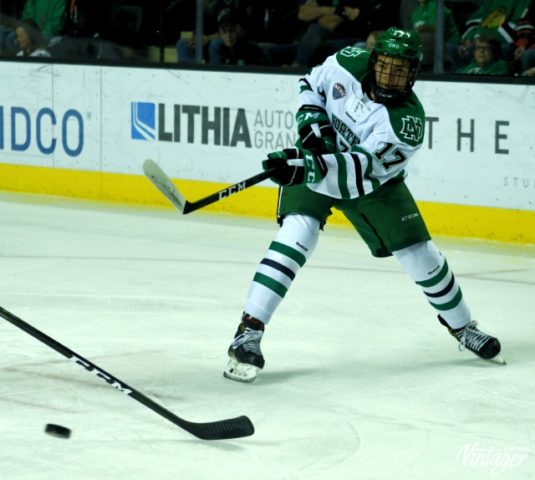
The previous season, Jost racked up 104 points in 48 contests as captain for the Penticton Vees of the BCHL. He ended the season with the highest point-per-game rate in the league. Jost was chosen as the BCHL Most Valuable Player as well as the Canadian Junior Hockey League National Player of the Year. He also played for Canada in the U18 World Juniors, where he scored 15 points in seven games.
Jost looked primed to join an Avalanche team in need of fresh legs and a new attitude. They called him up at the end of the 2016-17 season to expose him to the NHL. Jost played quick and feistily, displaying all the traits the team needed to enter the next season with hope. He endeared himself to fans when he scored his first goal in the final home game of the season, which was an all-too-rare win.
Unfortunately, Jost has not seen his game progress in the NHL as hoped. Last season, he suffered a knee injury early on. The return from injury put him on a rehab assignment with last year’s AHL affiliate, the San Antonio Rampage, for five games before returning to the NHL. Jost managed to play 65 regular season games with the Avalanche, during which he scored 22 points (12 goals, 10 assists), and Jost appeared six postseason games as well, where he tallied one assist. It wasn’t awful, but it wasn’t ideal.
So far this season, Jost has tallied 15 points over the course of 43 contests. Again, not horrible, but not the scoring sensation people expected. So, what happened?
The Avalanche Struggled to Develop Prospects
The Avalanche have a less-than-stellar history of developing promising players who aren’t instant stars. Since 2010, the Avalanche have only had four players who came through their system who have played in over 100 NHL games – Gabriel Landeskog, Nathan MacKinnon, Mikko Rantanen and Tyson Jost. All four were picked in the first round – Landeskog was second overall, MacKinnon was first overall, and Rantanen and Jost were both 10th overall picks.
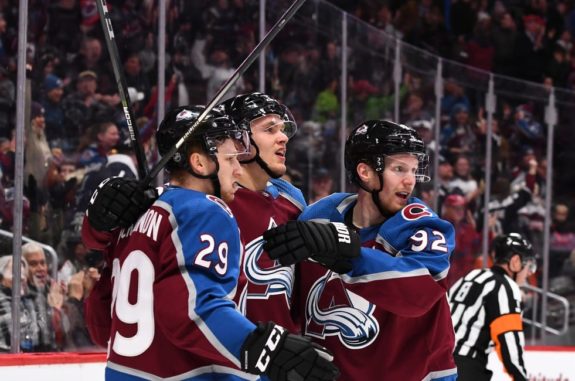
Not a single player picked outside of the top-10 has played 100 NHL games for the Avalanche, going as far back as the 2010 draft.
Maybe the Avalanche didn’t do a good job of scouting. There may be some truth to that. But Will Butcher, who was a fifth-round pick by the Avalanche in 2013, has played 129 NHL games – for the New Jersey Devils. Butcher played four years in college before refusing to sign with the Avalanche. He didn’t spend a day in their farm system.
Goaltender Calvin Pickard came close. A second-round pick in the 2010 draft, Pickard played 86 NHL games for the Avalanche. However, fellow goaltender Spencer Martin, a third-round pick in the 2013 draft, has only three NHL appearances. Neither of them look to be future starters in the NHL.
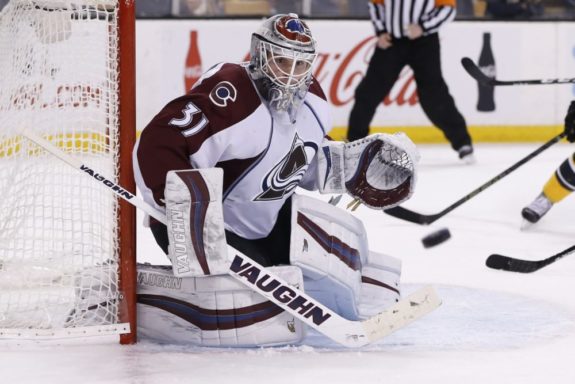
The Avalanche have only had nine first-round picks going back to 2010. Two of them are too recent to evaluate, two never really made it through the Avalanche farm system, and one suffered a concussion before joining the team – severely curtailing his hockey career. In fact, for those following the team closely, defenseman Duncan Siemens (the 11th overall pick in the 2011 draft) became the face of the Avalanche’s failed development system. And Conner Bleackley never even earned a contract with the team.
Chris Bigras, another defenseman, also failed to thrive under the Avalanche’s supervision even though he was the 32nd pick in the draft. Bounced back and forth between the AHL and the NHL during his first two years with the team, Bigras appeared to lose confidence and never moved beyond his first few promising NHL performances.
And it’s not just drafted players that failed to progress in the Avalanche system. Players who signed their entry-level contracts with the Avalanche, spent time in the AHL, and struggled to make an NHL roster, include Andrew Agozzino, Dennis Everberg, Samuel Henley, Colin Smith, Bourna Rendulic, Roman Will and Andrei Mironov. Defenseman Anton Lindholm fits in here somewhere as well even though he played 60 games with the Avalanche. Some of these players had greater skillsets than others, but they all made limited progress.
Mikko Rantanen is arguably the only recent draft pick who spent nearly a full year in the Avalanche’s AHL system who has risen to reach his potential. J.T. Compher spent a fair amount of time there but his game didn’t really flourish until playing for head coach Jared Bednar. Forward A.J. Greer showed a lot of promise but has yet to become an NHL player. There are concerns that the Avalanche messed up his development to the point where Greer will languish in the AHL.
Comparing the Avalanche to Other NHL Clubs
The Avalanche have done such a poor job of developing their prospects that they have defied the statistical odds. According to Jamie Fitzpatrick at ThoughtCo, who researched the results of players drafted in the 1990s and their career track, of the 2,600 players selected in the NHL entry draft, 494 of them played in at least 200 NHL games. That’s 19%.
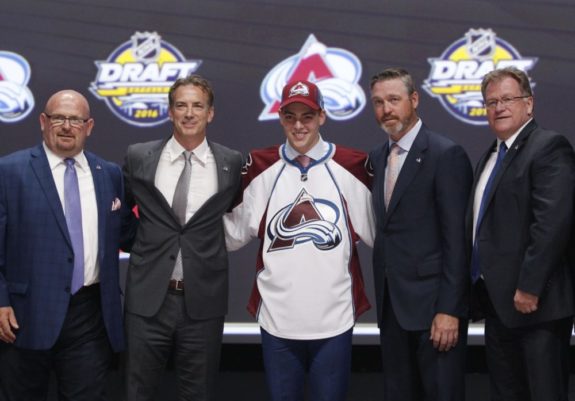
Assuming Jost gets recalled and rediscovers his game, the Avalanche will have only four draft picks likely to meet that threshold in the next two years. If we exclude the two most recent drafts, that’s four picks out of 46 selections going back to the 2010 draft. That’s 8.7% of the players the Avalanche picked who will likely play at least 200 games. If one wants to add Butcher to the mix, that’s 10.87%, still well below the statistical average.
But there’s more bad news. According to TSN, there’s an 80% chance of a first-round pick turning into a 50-game NHLer, a 44% chance with a second-round pick and 30% chance with a third-rounder.
For the Avalanche, dating back to the 2010 draft and excluding the two most recent drafts (too soon to assess), they have had four of seven first-round picks make it to the NHL, which sounds good until looking at the statistics and realizing that’s 57%, while the league average is 80%.
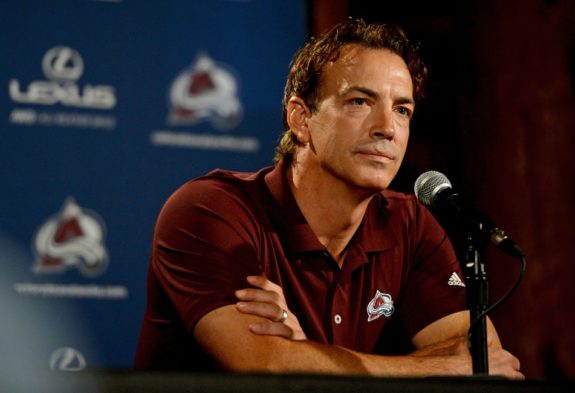
The numbers don’t improve with the second round, either. The Avalanche have had six second-round picks over that timeframe, of which only Calvin Pickard has had any significant ice time. The Avalanche managed to cultivate a 16.67% success rate helping their second rounders get to 50 or more NHL games. The NHL average is 44%.
Their third round isn’t much better. Again, the Avalanche had one player in six make it to the 50 NHL game mark, and he didn’t spend any time in their system. Michael Bournival was their 2010 third round pick but he was traded to the Montreal Canadiens. He managed to accumulate 113 NHL games. If one includes him, then the Avalanche have a 16.67% success rate there as well. Again, league average is 30%.
That’s not just bad. That’s abysmal.
According to hockeyDB, the Avalanche have six prospects with 100 or more games going back to the 2010 draft. In the Central Division, only the Minnesota Wild come near that low, as they had seven. The rest of the division shakes out with the Chicago Blackhawks at 13, the Nashville Predators at 11, the Dallas Stars at 10, and the St. Louis Blues at nine. The Winnipeg Jets have one fewer year (because they weren’t the Jets until 2011) and they have 10.
Elsewhere in the league, the Edmonton Oilers have 15 draft picks with over 100 games under their belt, the Anaheim Ducks have 14, the Tampa Bay Lightning have 12, and the San Jose Sharks have 10, as do the Arizona Coyotes.
The Avalanche have been able to compensate for the development issues over the last five seasons by making some good trades, picking up reasonable free agents, and making some sensible waiver claims. But it boggles the imagination to consider what the team would look like if they had been even marginally better at drafting and developing their prospects.
Have the Avalanche Learned from Past Mistakes?
The Avalanche made some changes to their farm system in the last year. They changed their AHL affiliation to the Colorado Eagles, which brought the affiliate closer. They carried over the ECHL Eagles staff – which had won two successive championships – to the AHL while hiring a new head coach.
The Eagles practice running the same systems as the Avalanche, which almost never happened with the previous AHL club. Bednar seems intent on making sure younger players get more ice time, even if that means sending them down to the Eagles for short stints.
But Tyson Jost is the test case. He had a proven track record of success at every level of hockey prior to joining the Avalanche. Because the team was coming off a bad year and was hungry to build a young, promising core, they played him at the NHL level, perhaps rushing his development without providing the training.

But the Avalanche’s re-build is progressing. They have promising prospects and some skilled players. There isn’t the same need to rush Jost now. Will they let him stay with the Eagles long enough for him to rebuild his confidence and rediscover his scoring ways?
Jost is off to a good start. He’s played six games with the Eagles over the All-Star break. While it appeared to take him a while to acclimate, he finally started scoring in his last two games, where he’s notched three goals and recorded an assist. It’s a good beginning.
But a couple more weeks with the Eagles might help Jost get into a rhythm where he stops thinking about how to play, and it starts to once again become automatic. It might also give him time to not only learn a few things, but to practice them before jumping back into the NHL spotlight.

If the Avalanche recall Jost for their Saturday night game against the Vancouver Canucks, they may actually be damaging Jost’s development rather than cultivating it. Jost has enough promise that the Avalanche can spend some time laying a better foundation so he can have a long and prosperous career.
What Does the Future Hold for Jost?
It’s time for the Avalanche to learn their lesson. After bouncing Bigras and Nikita Zadorov back and forth to an AHL team that wasn’t even playing the same systems, sabotaging Bigras’ development and slowing down Zadorov’s, they should think twice before messing with Jost.
One of the key points from the teams who have been successful in developing their prospects? They let them develop in college or their AHL system. They didn’t rush them to the NHL. The Avalanche weren’t a deep enough team to do that before. But they can now.
Besides, A.J. Greer is waiting in the wings for another shot at the NHL. While Jost continues to develop, it may be time for the Avalanche to redeem a previous mistake. Anything is possible.